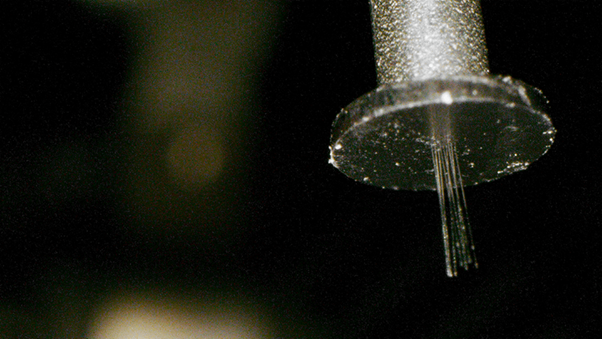Case Study
Posted on

“The Australia’s Economic Accelerator (AEA) Seed grant has given me, as the lead entrepreneur, the time, headspace and resources to devote myself to developing the surgical tools needed to safely insert our devices into the brain,” - Professor Steven Prawer, University of Melbourne
More than 30% of the 60 million people worldwide living with epilepsy are drug resistant.
Combined with the unpredictability of seizures, drug resistance is a major cause of anxiety for patients seeking to address the primary burdens of the disease.
An AEA Seed grant is supporting an exciting partnership between University of Melbourne researchers and Carbon Cybernetics.
Together they are working to commercialise an implantable device that can monitor brain activity with high precision. Their aim is to predict and prevent epileptic seizures, which could also lead to a breakthrough in effectively treating depression and anxiety without the use of drugs.
This technology has the potential to transform the lives of individuals with epilepsy by providing a drug-free treatment option. It's a significant advancement not only for Australian healthcare but also for global medical practices.
Lead entrepreneur, Professor Steven Prawer recently shared an update on the project.
What is your project setting out to do?
Professor Prawer: We have developed a revolutionary brain machine interface based on the use of extremely thin carbon fibres as the active electrodes. The carbon fibres are strong enough to be inserted into the brain, but small enough and flexible enough to not cause any damage.
The electrodes are so small that they record signals from individual neurons and with this super high-resolution data we are able to measure the ‘excitability’ of the brain.
Excitability is correlated with epileptic seizures and our aim is to use excitability to help people with epilepsy to predict and control their seizures, giving them control back of their lives.
Do you have any key takeaways from your interactions with industry?
Professor Prawer: Our partners in this project are Carbon Cybernetics. The main lesson that we have learned is that Australian investors are very risk adverse and require mountains of data showing that the devices work before they will invest.
This creates a catch 22 situation: the company needs money to build and test devices that will provide the data for safety and efficacy, but the investors want the safety and efficacy data before they will fund the device development and testing program.
This catch 22 results in the ‘valley of death’ for many medical device start-ups which is why the AEA program is so valuable as it can provide the funds to bridge the valley of death and allow companies to raise the funds they need for their pivotal clinical trials.
How has the AEA helped the progress of this innovation?
Professor Prawer: The AEA Seed grant has given me, as the lead entrepreneur, the time, headspace and resources to devote myself to developing the surgical tools needed to safely insert our devices into the brain.
The receipt of the grant provided external validation of the value of the project that I took to my university to release me from teaching and other duties. It has enabled me to consolidate the team needed for technical and commercial success include surgeons, regulatory experts, neuroscientists, clinicians, and commercial investors.
AEA is a $1.6 billion Australian Government investment aimed at transforming Australia’s research translation and commercialisation landscape.
The program is funding projects that align with national priorities to help take innovative ideas through to proof-of-concept and proof-of-scale as projects progress towards commercialisation and the creation of new businesses.
Find out more about and follow the AEA LinkedIn page for regular updates.
